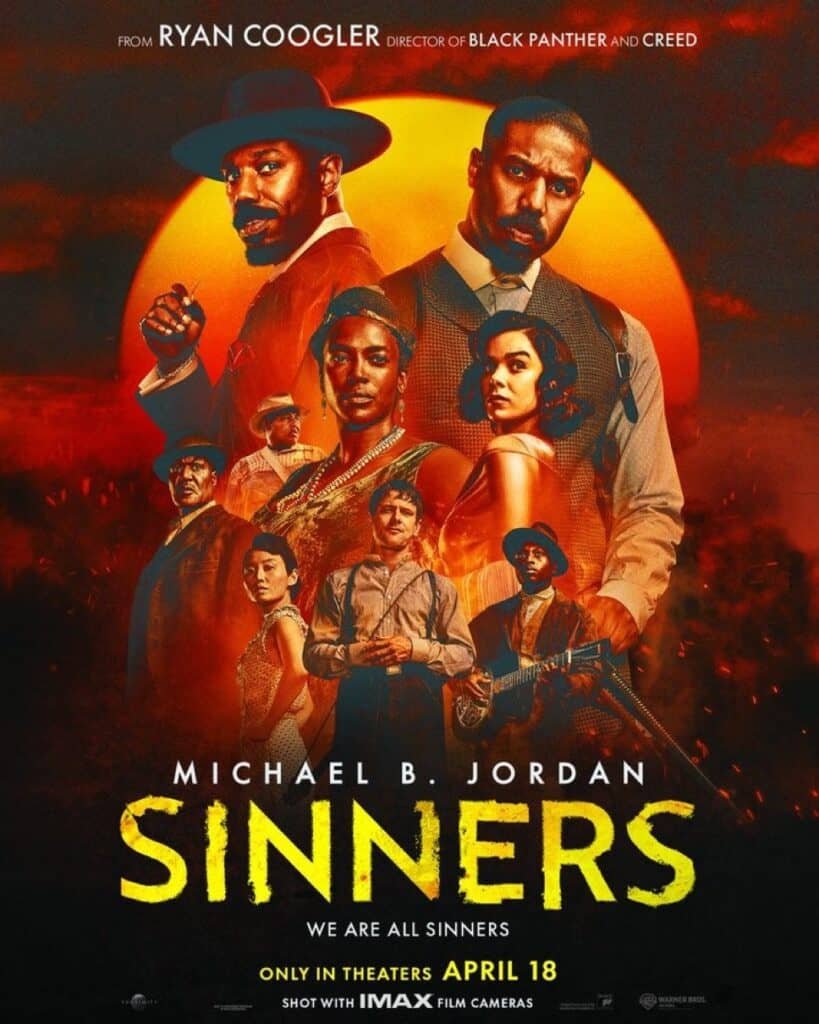Meta Description:
Discover how Ryan Coogler’s Sinners (2025) uses an emotionally rich, genre-blending score by Nicholas Britell and Terrace Martin to create one of the most musically cohesive and moving cinematic experiences of the year.
Tags:
Ryan Coogler, Sinners Movie 2025, Michael B. Jordan, Nicholas Britell, Terrace Martin, Movie Review, Film Score, Musical Storytelling, Gospel Music, Jazz Film, Redemption Drama, Viola Davis, Film Blog, Movie Soundtrack, Music in Film
Social Media Blurbs:
🎬 Just watched Sinners (2025)? Don’t miss our deep dive into how the film’s music tells its own powerful story. A masterclass in score-driven cinema. 🎺 #SinnersMovie #FilmMusic #RyanCoogler
🎼 “Every note matters, every silence speaks.” Discover how Sinners (2025) uses music to elevate every scene in this emotional triumph. Read the full review. #MovieReview #NicholasBritell #TerraceMartin
🔥 New on the blog: Our critical review of Sinners explores how sound and story flow together in one of 2025’s most emotionally resonant films. 🎥 #FilmBlog #Sinners2025 #MichaelBJordan
Ryan Coogler’s Sinners (2025) is not your typical redemption drama. Set in the crumbling heart of post-industrial Detroit, the film delivers a searing portrait of guilt, forgiveness, and spiritual rebirth. At its core is Elijah (Michael B. Jordan), a man clawing his way toward salvation after years behind bars. But while the performances are stellar and the narrative potent, what truly elevates Sinners is its extraordinary music. The film’s score, composed by Nicholas Britell in collaboration with jazz luminary Terrace Martin, doesn’t just accompany the story—it is the story. It weaves through the film like breath through lungs, giving life, rhythm, and coherence to every frame.
From the very first scene, Sinners makes its musical intentions clear. A lone trumpet motif, delicate and raw, plays over a desaturated montage of Elijah wandering city streets. It’s a moment of stillness that sets the emotional tone: mournful, searching, unresolved. Martin’s trumpet, muted and aching, doesn’t just echo Elijah’s journey—it speaks for him. It’s the first sign that this score won’t be content in the background.
Throughout the film, Britell and Martin establish a series of rich, evolving musical themes that ground and guide the narrative. Elijah is scored with a brooding mix of minor-key piano and fractured electronic textures—a sonic portrait of internal conflict. In contrast, Sister Celeste (Viola Davis), the compassionate nun who becomes his moral compass, is introduced with airy choral arrangements steeped in sacred harmony. Their scenes together gradually merge these themes into stunning musical duets, symbolizing their growing connection and mutual healing.
The score’s power lies not just in its melodies but in its structure. Rather than punctuating moments, the music flows continuously, creating an almost meditative sense of unity across the film. The second act, set within a halfway house, is particularly striking. As Elijah joins a group therapy circle, spoken dialogue fades into a collective gospel-tinged performance. It’s a bold move—a musical number born from silence and shared pain. Each voice is distinct, yet harmoniously joined, underscoring the film’s key message: redemption is communal.
Musically, Sinners is a genre-bender in the best sense. Gospel, jazz, hip-hop, ambient, and classical influences intermingle seamlessly. These stylistic shifts never feel jarring, thanks to the score’s cohesive emotional logic. A scene may begin with ambient synths echoing Elijah’s isolation and then morph into an orchestral swell as he reconnects with his estranged daughter. These musical transitions smooth the storytelling, ensuring the film flows with a clarity that transcends the script.
The use of leitmotif is particularly effective. The musical signatures for each character evolve over the course of the film. Elijah’s theme, introduced with hesitation and dissonance, gains complexity and harmonic richness as his arc progresses. By the end, a blues motif once heard during his arrest reemerges in a transformed gospel arrangement—a powerful aural cue that mirrors his transformation. This kind of musical foreshadowing is rare in contemporary cinema and shows just how integral the score is to Sinners’ emotional impact.
Cinematographer Rachel Morrison clearly understands this synergy. Her visuals are timed to the music with almost dance-like precision. In one dreamlike sequence, Elijah walks through an abandoned church as shafts of light flicker in rhythm with a somber requiem. The camera glides in step with the music’s tempo, each movement choreographed like a visual sonata. The result is hypnotic.
Even the diegetic music choices shine. In one unforgettable scene, a local youth orchestra performs Sam Cooke’s “A Change Is Gonna Come” at a community concert. The moment pulses with generational emotion. It’s not just a callback to the civil rights era; it’s a musical rallying cry for the film’s message of renewal. The audience—on screen and in the theater—is visibly moved.
Crucially, Sinners never overplays its hand. The score is expressive, but not manipulative. Britell and Martin allow dissonance to linger and silence to resonate. This restraint is what keeps the film from veering into melodrama. It’s a testament to their respect for the audience—they trust us to feel the weight of a moment without being told how.
What makes Sinners truly exceptional is its ability to blend sound and story into a seamless emotional journey. Every note, every silence, every rhythmic pulse is purposeful. The music doesn’t just underscore Elijah’s redemption; it guides us through it, beat by beat, breath by breath. In the end, the score functions not as ornament but as architecture.
If Coogler’s direction is the heart of Sinners, and the performances its flesh and bone, then Britell and Martin’s music is its spirit. Rarely has a film relied so heavily—and so effectively—on music to unify its themes and characters. It’s a towering achievement in musical storytelling, one that will resonate long after the final credits fade.
Verdict: A haunting, beautifully orchestrated film that redefines the role of music in cinema. Essential viewing for anyone who believes in the transformative power of sound.

